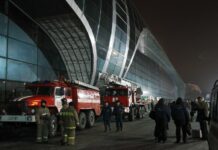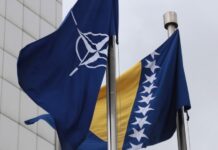Uncertain fate of our combat aircraft
{gallery}newsletters/9/4/1{/gallery}By “selling” combat aircraft to Serbia, our country would earn practically no financial benefit. It seems political authorities fail to recognize their huge historic value.
Prompted by announcements that our combat aircraft, recently written-off, could be “sold” for almost nothing to Serbia, the Historic Museum in Sarajevo has officially pointed the state authorities’ attention to the fact that these aircrafts have exceptional historic value for our country.
The silence of politicians
This Museum has sent the Presidency and the Ministry of Defense of Bosnia and Herzegovina a written request asking for at least a few out of seven J-22 Orao jets presently located at the military airport Mahovljani near Banja Luka to be kept for museum display.
In spite of the fact that it has been over a year since this official request was filed, and the fact that the Historic Museum’s initiative has been supported by directors of civil airports in Sarajevo, Mostar and Tuzla, the authorities have not responded yet.
“The part of public familiar with this matter knows that Orao airplanes were produced in cooperation with Romania in Mostar, by our Soko Aviation Industries. The fact that this was the only domestic aircraft able to exceed the speed of sound significantly increases its historic value. This is why we have provided our expert opinion and asked that at least one of these airplanes is kept and placed in our Museum in Sarajevo on permanent display, and that one is kept for Banja Luka and one for Mostar as well“, says the Historic Museum director Muhiba Kaljanac.
Since these BiH Armed Forces’ airplanes never got BiH symbols, the Historic Museum has expressed its willingness to paint its aircraft in original colors and symbols of the Yugoslav People’s Army. That way it would best remind of the times in which it was produced in Mostar, when it was considered one of the top technological breakthroughs in Bosnia and Herzegovina. As such, it would fit flawlessly into the museum’s existing items on display. In line with the practice in developed countries, the aircraft would be placed on a concrete pillar and secured by the existing video surveillance. This would protect it from possible vandalism, and show it in its flying position.
No response
{gallery}newsletters/9/4/2{/gallery}The Historic Museum experts have suggested that the aircraft that would remain at the Banja Luka airport could keep its present Serbian insignias and that another aircraft could be placed at Mostar Airport in Ortiješ, where it would commemorate the place of its production and its first operation base. It would be up to the local community to decide which symbols the aircraft would carry.
“There has not been much response in our country to museum projects such as this, although they are not very expensive. We believe that preservation of Orao jets is a great opportunity for this trend to change,” director Kaljanac concludes.
(More in the new edition of magazine „Democracy and Security in South-East Europe“)
Text and photo: A. I.







